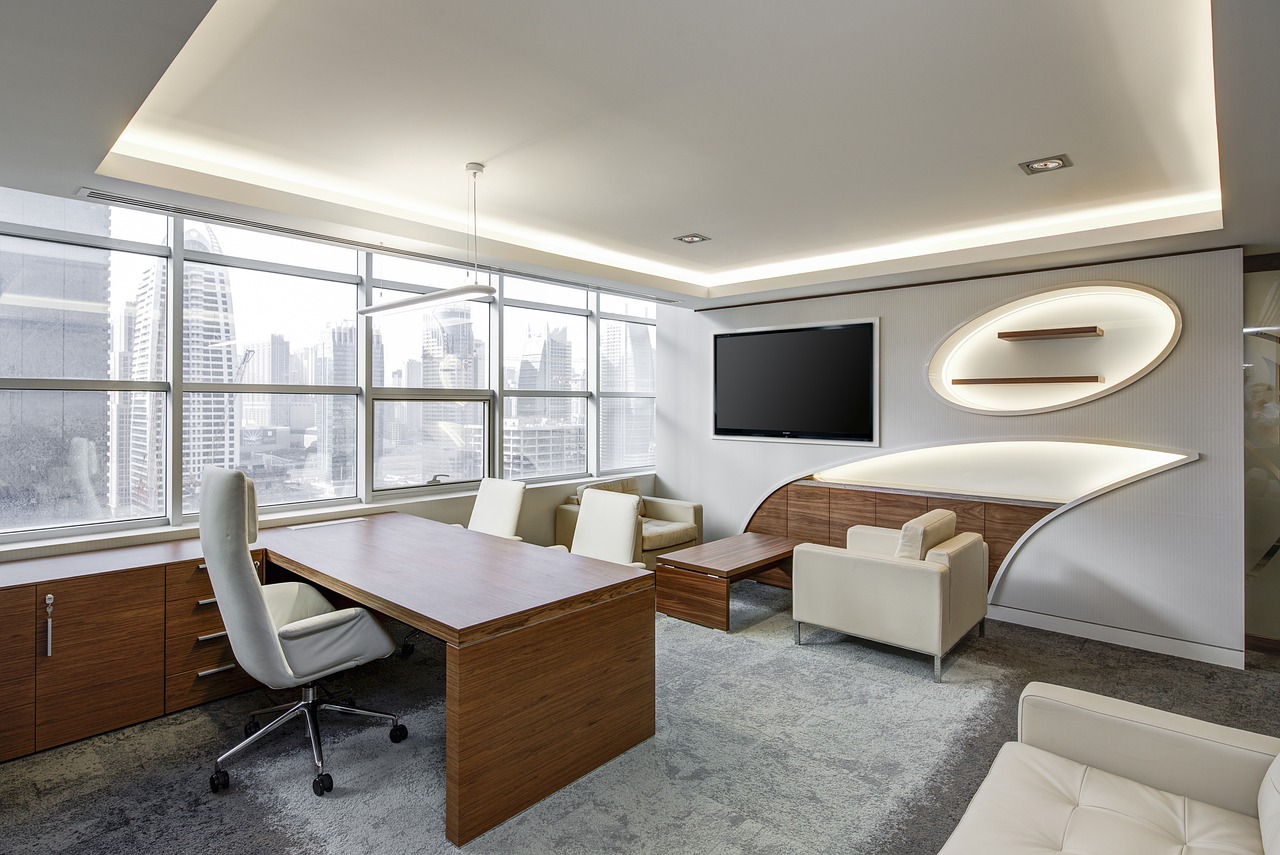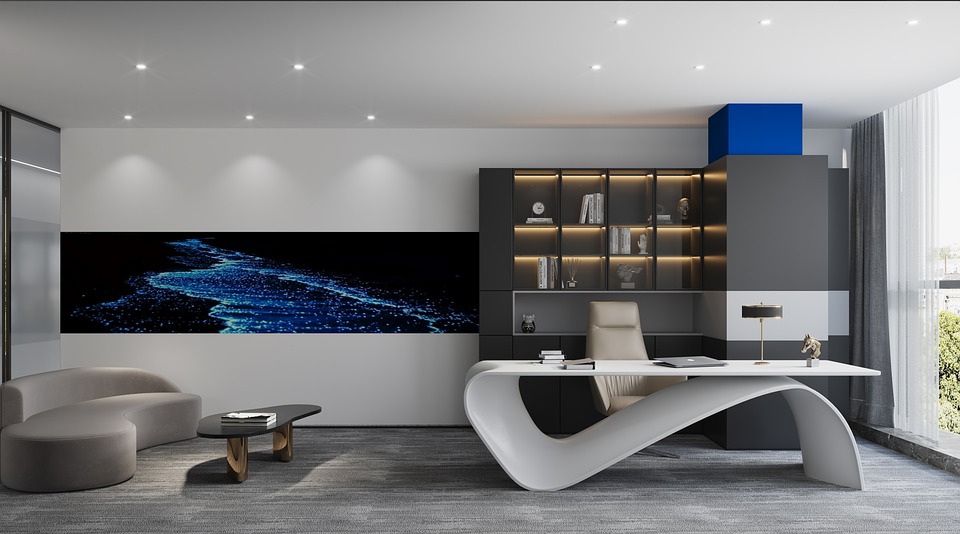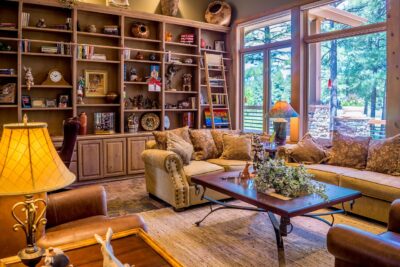
How to Retrofit Old LED Fixtures with Modern Covers
How to Retrofit Old LED Fixtures with Modern Covers By Aman | Updated on April 15th 2025 LED lighting has pretty much taken over the
Home » Innovative Lighting Solutions for Modern Workspaces
The modern workplace has evolved significantly, with design and functionality playing crucial roles in fostering productivity and creativity. Among these elements, lighting stands out as a vital factor that not only enhances aesthetics but also directly impacts employee well-being and efficiency. Innovative lighting solutions are redefining the way we approach office spaces, blending advanced technologies, sustainability, and customizable designs to meet the diverse needs of today’s dynamic work environments.
Whether through the implementation of LED smart systems, biophilic lighting, or human-centric designs, these advancements are shaping the future of modern workspaces. This article explores the latest trends and technologies in office lighting and highlights their transformative potential.

Lighting is more than just illumination; it profoundly influences our cognitive functions, emotional state, and overall health. Here’s how:
Scientific research reveals that appropriate lighting can:
Human-centric lighting adapts to our circadian rhythms, the natural cycle that regulates sleep and wakefulness. By adjusting color temperatures and light intensity throughout the day, this lighting approach helps:
By synchronizing lighting with human biology, modern office lighting can create an environment that fosters both health and efficiency.
LED technology has revolutionized office lighting with its energy efficiency and versatility. Smart LED systems take this a step further, offering features such as:
Biophilic lighting integrates natural elements into the workspace, promoting a connection with the outdoors. This includes:
These designs not only enhance aesthetics but also create a calming and rejuvenating atmosphere.
Modern workspaces often embrace minimalistic designs, and lighting plays a key role in achieving this aesthetic. Examples include:
Dynamic lighting systems change in intensity and color throughout the day to align with natural light patterns. This ensures optimal illumination during different work phases, from brainstorming sessions to focused tasks.
Lighting is an integral part of modern office design, blending functionality with visual appeal.
Bold and creative fixtures such as chandeliers or geometric pendants add character to meeting rooms and reception areas. These fixtures serve as both functional elements and artistic expressions.
Floor lamps provide localized lighting while adding a touch of elegance to lounging areas. Choose designs that match your workspace’s theme, from industrial to minimalist.
Combining ambient, task, and accent lighting creates a well-balanced and visually dynamic environment. For example:
Energy-efficient lighting solutions are essential for modern workspaces striving to reduce their environmental footprint.
LEDs are the cornerstone of sustainable lighting, offering:
Automation and daylight harvesting systems optimize energy use by adjusting lighting based on natural light availability and occupancy. These systems ensure that light is only used when and where it’s needed.
Modern offices require adaptable lighting solutions to meet diverse needs.
With smart lighting systems, employees can customize their lighting preferences for:
Modular lighting systems allow businesses to reconfigure lighting layouts as needed. This is especially useful in dynamic work environments with evolving space requirements.

Innovative lighting solutions are reshaping modern workspaces by blending technology, design, and sustainability. From human-centric lighting that supports well-being to energy-efficient LEDs that promote sustainability, these advancements create environments where employees can thrive.
Businesses looking to enhance their lighting systems can explore options like custom light covers and diffusers from Fluorolite, which specializes in tailored solutions for diverse office needs. By prioritizing lighting, companies can transform their spaces into hubs of creativity and productivity.
Trends include human-centric lighting, biophilic designs, and smart LED systems. These approaches focus on enhancing productivity, aesthetics, and energy efficiency.
Proper lighting reduces eye strain, boosts alertness, and supports overall well-being. Dynamic lighting systems aligned with circadian rhythms can significantly improve focus and efficiency.
LED lighting offers energy efficiency, longer lifespans, and customizable brightness and color temperatures. These benefits make LEDs a sustainable and cost-effective choice for modern office lighting.
Smart lighting systems can be integrated with automated controls, sensors, and mobile apps. For custom light covers and advanced diffuser options, businesses can consult providers like Fluorolite for tailored solutions.
Factors include energy efficiency, adaptability, and the ability to create a visually appealing yet functional environment.

How to Retrofit Old LED Fixtures with Modern Covers By Aman | Updated on April 15th 2025 LED lighting has pretty much taken over the

How to Prevent Yellowing and Cracks in LED Fixture Lenses By Aman | Updated on April 15th 2025 You’ve probably seen it before—those once-clear LED

How to Choose LED Fixture Lenses for Harsh Industrial Environments By Aman | Updated on April 8th 2025 Ever stepped into a factory or a
"We've Got You Covered" and Trace n'Fax are Registered Trademarks of Fluorolite Plastics, LLC. © 2011-2024 All rights reserved Fluorolite Plastics